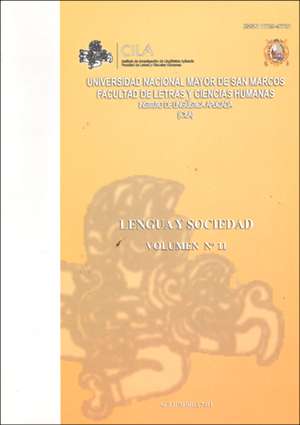Three maps by Father Samuel Fritz of the Peruvian Amazon basin (17th century) seen through the eyes of a linguist
DOI:
https://doi.org/10.15381/lengsoc.v11i1.22662Keywords:
Cartography, documentation, tracing, chronic, amazonian languagesAbstract
This is a study about the languages and peoples of the Amazon in the late seventeenth century, departing from three maps elaborated by the missionary Samuel Fritz. The aim of the article is to provide a linguistic perspective on the Amazonian peoples and languages at that time period, in order to provide a delineation of the spaces that these languages once occupied, as well as of the ones that the surviving languages occupy today. The three maps made by Father Fritz allow us to identify languages and peoples, linked to certain geographical areas in the Amazon at that time period, and they also reveal numerous cases of extinction of peoples and their respective linguistic creations.
Downloads
Published
Issue
Section
License
Copyright (c) 2011 Gustavo Solís Fonseca

This work is licensed under a Creative Commons Attribution 4.0 International License.
AUTHORS RETAIN THEIR RIGHTS
a. Authors retain their trade mark rights and patent, and also on any process or procedure described in the article.
b. Authors can submit to the journal Lengua y Sociedad, papers disseminated as pre-print in repositories. This should be made known in the cover letter.
c. Authors retain their right to share, copy, distribute, perform and publicly communicate their article (eg, to place their article in an institutional repository or publish it in a book), with an acknowledgment of its initial publication in the journal Lengua y Sociedad.
d. Authors retain theirs right to make a subsequent publication of their work, to use the article or any part thereof (eg a compilation of his papers, lecture notes, thesis, or a book), always indicating its initial publication in the journal Lengua y Sociedad (the originator of the work, journal, volume, number and date).






